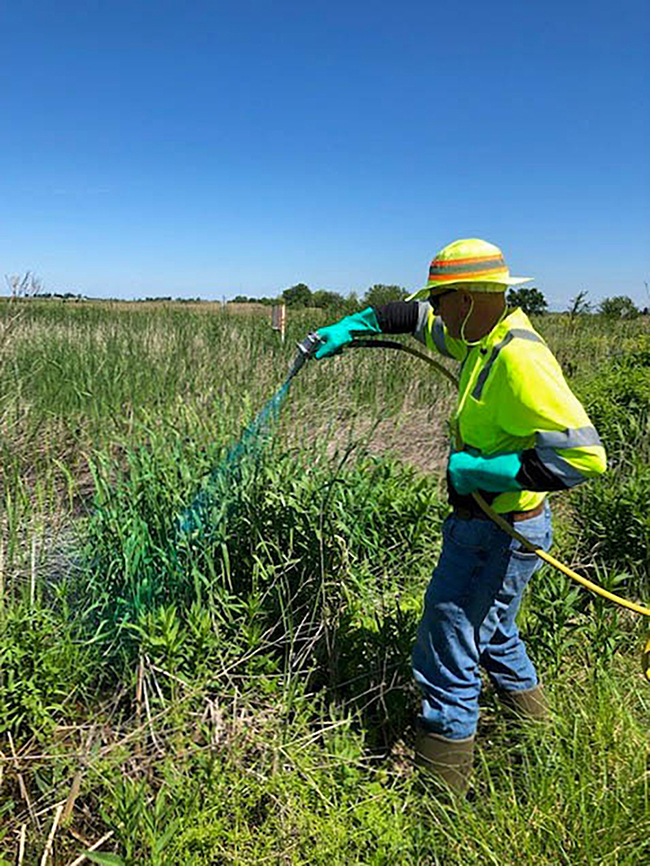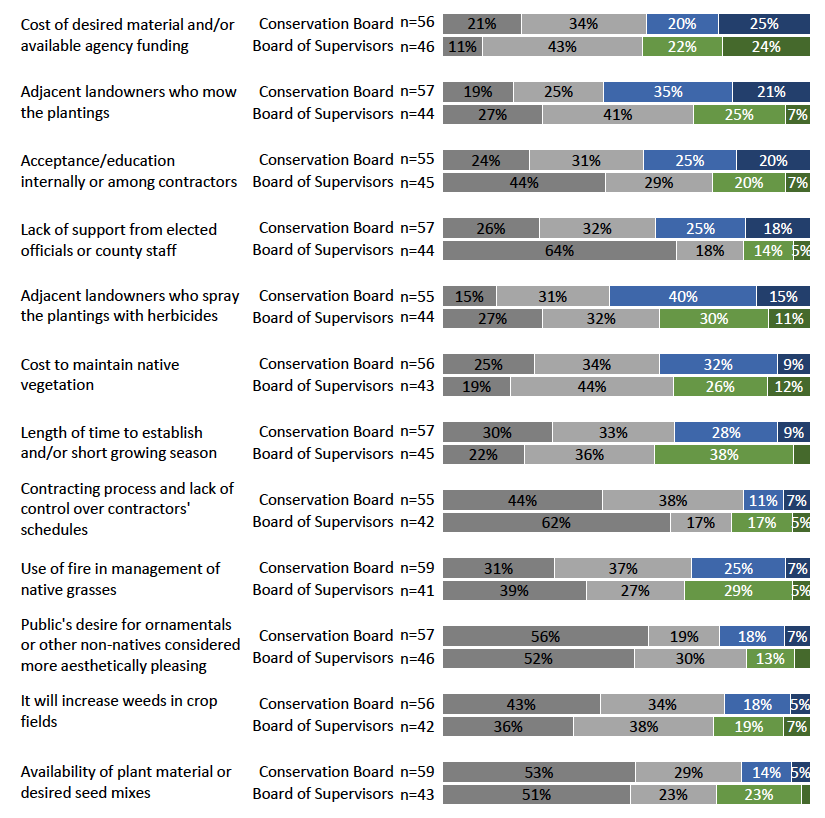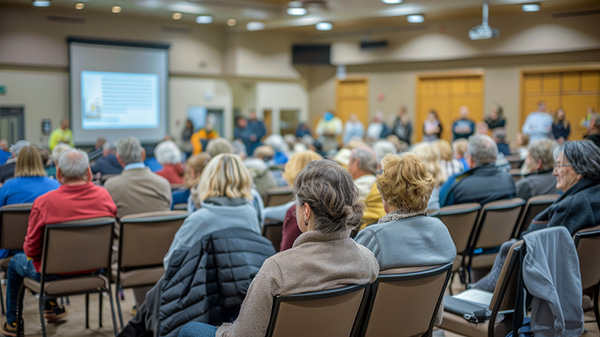Evaluate Level of Interest in Starting a Program
Table of Contents
Initial Considerations

Residents and county or city government employees may be among the first to be interested in starting a program that safely and strategically manages roadside vegetation using the principles of integrated roadside vegetation management.
People are most often interested in developing a roadside program because they want roadside management that is
- organized and proactive;
- responsible and sustainable;
- cost-effective;
- multipurpose; and
- poised to take advantage of the Living Roadway Trust Fund (LRTF) to offset equipment and roadside inventory costs.
Collect Information on the Current Need for the Program
Collecting information will help make a strong case for an integrated roadside vegetation management (IRVM) program to a county board of supervisors or city council that may be skeptical of its necessity. The following suggestions provide a good starting point for considering how much information is necessary to collect for your county or city.
County Vegetation Management Survey
Supporters need to gather the following information demonstrating the need for the IRVM program:
- money and time currently spent on managing roadside vegetation;
- satisfaction levels of county officials and residents with erosion control, roadside appearance, presence of noxious weeds, and safety issues such as the amount of brush near roads; and
- how having an IRVM plan and a roadside manager will provide the resources necessary to proactively and effectively manage the local roadside vegetation.
Obtain data from county herbicide-use records on the amount of herbicide used, the cost, and the products used. Similarly, the county spray records typically provide information about who does the spraying, when it occurs, the technology used to spray, the number of miles covered each year, and the costs.
The County/City Roadside Vegetation Management Survey (Appendix 2A) can serve as a basis for evaluating a county’s roadside vegetation management program. Obtaining meaningful survey data may require interviews with members of the road maintenance crew or others directly involved. Though individual survey responses are subjective, the aggregate data will help identify and prioritize personnel and equipment needs.
Where Are the Savings?

Counties and cities realize long-term savings by establishing native plant species that are better adapted and more competitive than non-native vegetation. Immediate savings are obtained by reducing or eliminating money spent on contractor services by
- using LRTF funds to purchase equipment to manage weeds and brush in-house; and
- installing and maintaining erosion control measures with county personnel.
A professional vegetation specialist on staff can provide additional savings by
- conducting required National Pollutant Discharge Elimination System stormwater inspections;
- doing wetland delineations to comply with local and federal mitigation requirements;
- preparing wetland monitoring reports for mitigation; and
- developing a proactive program of managing roadside vegetation that dovetails with current road maintenance activities instead of a reactive program that fixes problems after they have formed (the savings might be simply doing a much better job with the same amount of dollars).
Potential Objections to Starting a Program
Communicating the benefits of starting a program is important, but it’s also critical to be prepared to address the common objections given by those opposed. According to a 2016 survey of county board of supervisors and conservation board members (Stephenson et al., 2017), the greatest barriers to implementing IRVM practices are
- a lack of support from elected officials or staff;
- a lack of staff capacity;
- other concerns in the county being a higher priority;
- the cost of starting a program; and
- a lack of community support.
Survey respondents said challenges to using native species include cost, adjacent landowners mowing the plantings, and lack of internal or contractor acceptance (Stephenson et al., 2017). A survey of engineers and roadside managers found similar barriers (Stephenson & Losch, 2016). Both reports provide useful background information about how county officials make decisions regarding roadside management. Of course, familiarity with local decision-makers’ values and perceptions of roadsides will allow citizen groups to be prepared for proposing this new initiative.

Proposing a Program to County or City Decision-Makers
Those wanting to start a roadside vegetation program, whether county or city employees or citizens, will need approval from the decision-makers to move forward. This typically means the county board of supervisors, city council, or city administrator/manager who controls the local budget, and the engineer, county conservation board director, board of supervisors, or city administrator/manager who will supervise the roadside manager. Program supporters will typically present the need for a roadside vegetation program at a board of supervisors or city council meeting.
Citizens who want less roadside spraying and more native vegetation often lead the effort to change their county or city’s roadside management practices. This may start with one person or a small group who recruits other citizens to join the cause. Once the group has formed, it can lay out its goals over the course of a few meetings.
The roadside program manager at the Iowa Roadside Management Office is available to answer questions and provide resources to help inform people about roadside programs. For example, the paper “Roadside Weeds, Brush, and Erosion: How Your County or City Can Manage Them to Create Safe, Healthy Roadsides and Roads” details the benefits gained from having a roadside vegetation program. Brochures about roadside programs and roadside vegetation are also available.

When the citizen group is ready, it should ask for time with the county board of supervisors or city council to propose its vision and goals for the roadside vegetation program and request a formal IRVM committee. Unless the board can provide a large block of time during a regularly scheduled meeting, a special meeting specifically to discuss the proposal will allow for better discussion. The majority of the citizen group should be present at the meeting.
Strategically choose the person or people to present about the proposed program based on who local decision-makers would trust the most. In some cases, it should be the county or city employee who would be responsible for developing the program and supervising the roadside manager. In other situations, decision-makers would also want to hear from one or more of the following people: a roadside manager, engineer, or conservation board director from a nearby county with a roadside program; a federal Natural Resources Conservation Service (NRCS) employee; a Soil and Water Conservation District commissioner; the chair of the citizen group; someone representing farming interests; a weed control professional; the statewide LRTF coordinator; or the roadside program manager at the Iowa Roadside Management Office. The goal is to fortify the effort with respected individuals who can address the elected officials with candor and expertise.
No matter who presents, it is crucial to demonstrate local support with a high turnout of residents (ideally including some with political influence) who support the effort.
The desired outcome for this initial meeting is for the board of supervisors to appoint a formal IRVM committee to examine the county’s current roadside management practices and determine what is best for the county. Recommended IRVM committee membership includes one or more county supervisors or city councilors, the county/city engineer, the road superintendent/foreman, the weed commissioner, a member of the county conservation board, and key members of the original citizen group.
Residents can also write letters to the editor of the local newspaper and email or call their local officials to convey their support for the program.


